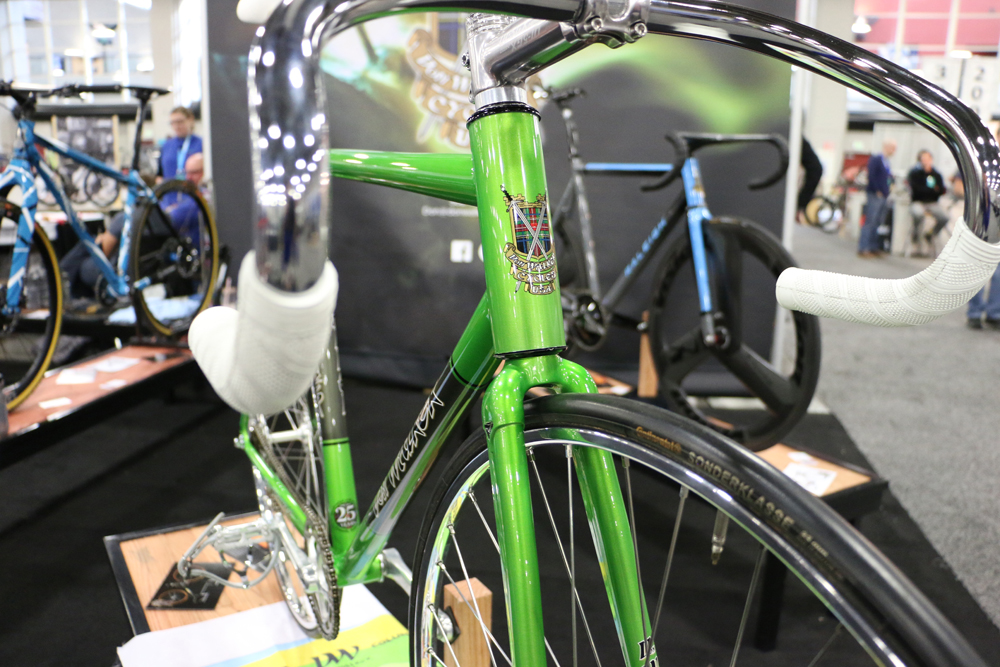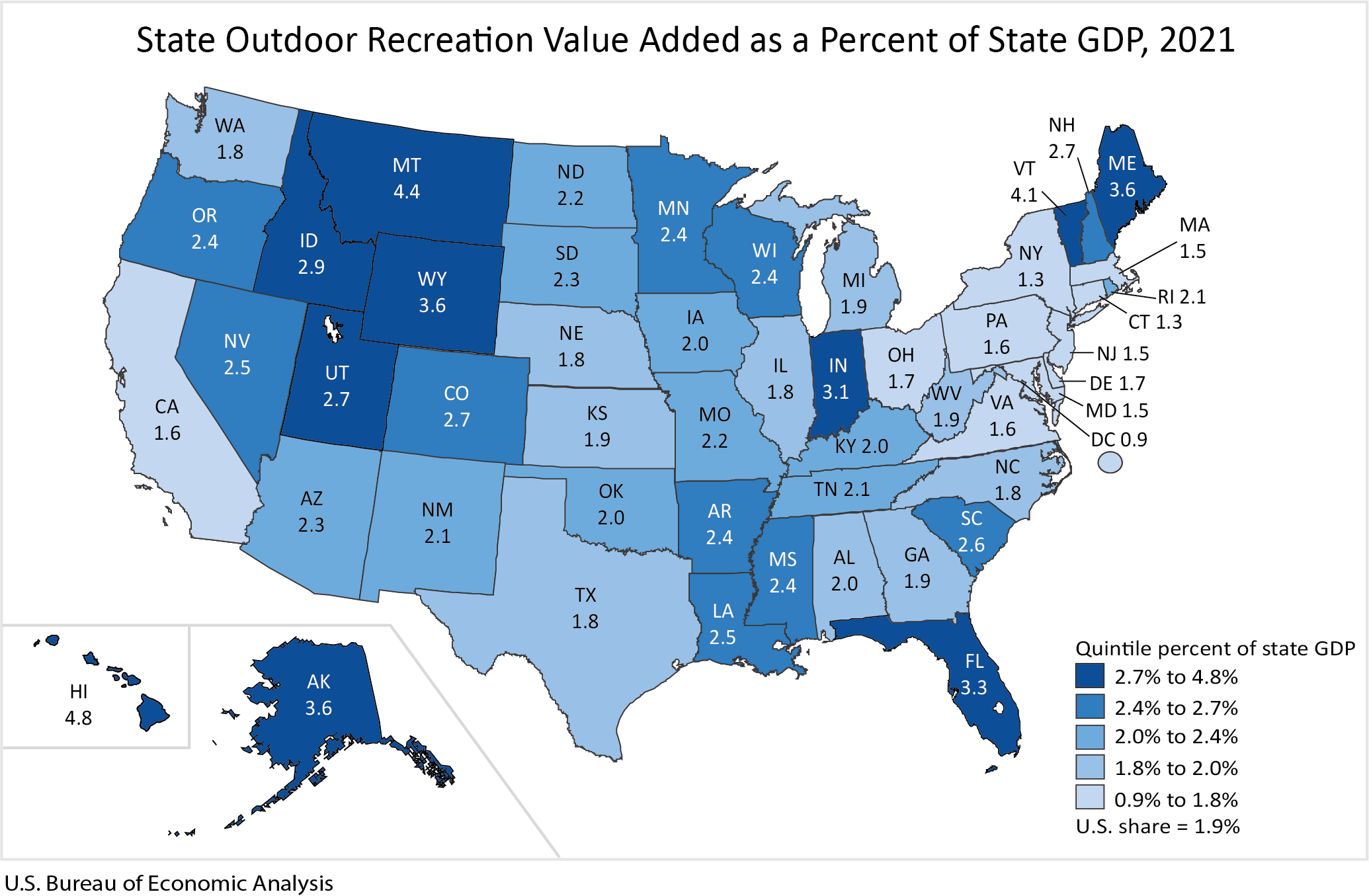BOULDER, Colorado (November 15, 2022) — The Bureau of Economic Analysis (BEA) recently released their 2021 estimate of the outdoor recreation economy for the U.S., all 50 states, and the District of Columbia. The data includes estimates of value added (or gross domestic product) for the overall outdoor recreation economy in addition to bicycling and other specific activities.

The BEA estimated that bicycling contributed $3.28 billion to the gross domestic product (GDP) in 2021. This measure of GDP only tells a small portion of bicycling’s overall contribution to the U.S. economy, but the takeaways are still impactful.
The BEA measures the economic contribution of bicycling (and other outdoor activities) to the GDP. This means it only captures spending on goods produced within the U.S. and, as a result, excludes imports in its estimates. Because the overwhelming majority of bicycles sold in the U.S. are imported, the money spent on those products does not figure into the BEA’s estimates.
“Retail sales data from NPD Group, a market research company, estimated that the retail market for bicycles, parts, accessories, apparel, and service reached $8.95 billion in 2021, down only slightly from $9.25 billion in 2020,” said Patrick Hogan, senior research manager of PeopleForBikes. “If the BEA is estimating a growth in the economic contributions of bicycling in the U.S., this indicates that sales of domestic products and services fared better in 2021 compared to imports.”

“For those familiar with the estimates of economic impact presented in the Outdoor Industry Association’s (OIA) 2017 Outdoor Recreation Economy Study, there are other important differences to consider when estimating how bicycling contributes to the U.S. economy,” said Hogan. “Simply put, the BEA measured the value of domestic goods and services produced by the industry, whereas the OIA measured consumer spending on gear, apparel, footwear, equipment, as well as travel — a particularly important part of the equation as OIA estimated that it accounts for more than 85% of consumer spending on bicycling.”
The 2017 OIA study estimated that Americans spend $97 billion on cycling and skateboarding each year. It’s unclear why they would link to very different sports that are sold in different types of retail and reach different markets.
The study also estimated that the outdoor industry as a whole generated $887 billion in consumer spending, 7.6 million jobs, $65.3 billion in Federal tax revenue, and $59.2 billion in local and state tax revenue.
As PeopleForBikes expands its own research program, the organization is prioritizing an economic impact study for 2023, providing an update to the 2017 work published by OIA. 2023 will also bring the measure of direct-to-consumer (DTC) bicycle sales, along with estimates of used bike sales prioritized for 2024 as PeopleForBikes works to better capture all market sales, enhancing their ability to describe how bicycling creates significant value for the U.S. economy.
The BEA’s latest numbers also support PeopleForBikes’ work to increase funding for biking and outdoor recreation at the local, state, and federal levels. Specifically, the data shows investments like America’s Outdoor Recreation Act (S.2366) are timely and critical to expanding access and resources for an ever-growing number of Americans purchasing bikes and outdoor products to recreate and enjoy the outdoors.

